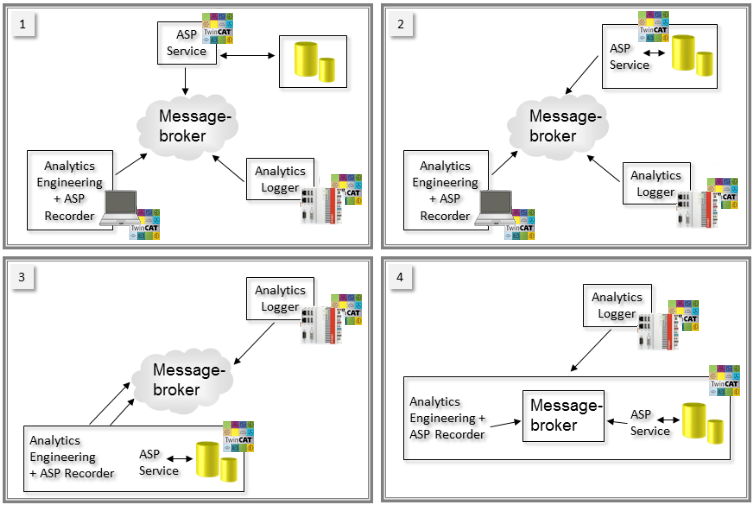Technical introduction
The basic idea of the TwinCAT Analytics Storage Provider (ASP) is to have a gateway that largely frees the user from configuring a data sink, i.e. a storage or a database. The user does not need to set up his own table structure in a database. He only has to configure which of the supported data sinks he wants to use for storing his data.
Service Management
The Analytics Storage Provider service can run anywhere on the network. It is implemented as a Windows service. The service can run on hardware devices, such as industrial PCs or embedded PCs in the local network, and also on virtual machines in the same network, or in a cloud system, for example.
Data Management
The Storage Provider works with the binary format of TwinCAT Analytics. This allows it to receive and store streams from an MQTT message broker and to create and send new streams itself. The user only needs the recorder, which is integrated with the TwinCAT Analytics Workbench or the service tool in his own engineering system. The variables themselves are displayed in the TwinCAT Target Browser. For the Analytics binary format, they are divided into live and historical data. Live data can be used as input to the Analytics Storage Provider. Historical data are the values from the database/storage provided by the Storage Provider.
Topologies
The many degrees of freedom offered by IoT technologies enable different topologies. The following picture shows the most important constellations.

- Each SW package runs on its own HW device or virtual machine.
- The Analytics Storage Provider Windows service runs on the same device as the database/storage.
- Analytics Engineering, Analytics Storage Provider, and database or storage are on the same device. Only the Message Broker and Analytics Logger (data source) run on other devices.
- In this topology view, only the Analytics Logger runs on its own PC. This may be the case in a machine application. All other tools in the Analytics tool chain reside on one device, including the MQTT message broker.
Topologies with additional ASP clients
Currently, two additional clients are available from the Analytics Storage Provider perspective. A command line based client that allows execution from almost any application. And a PLC library that can also be used to influence the actions of the storage provider.